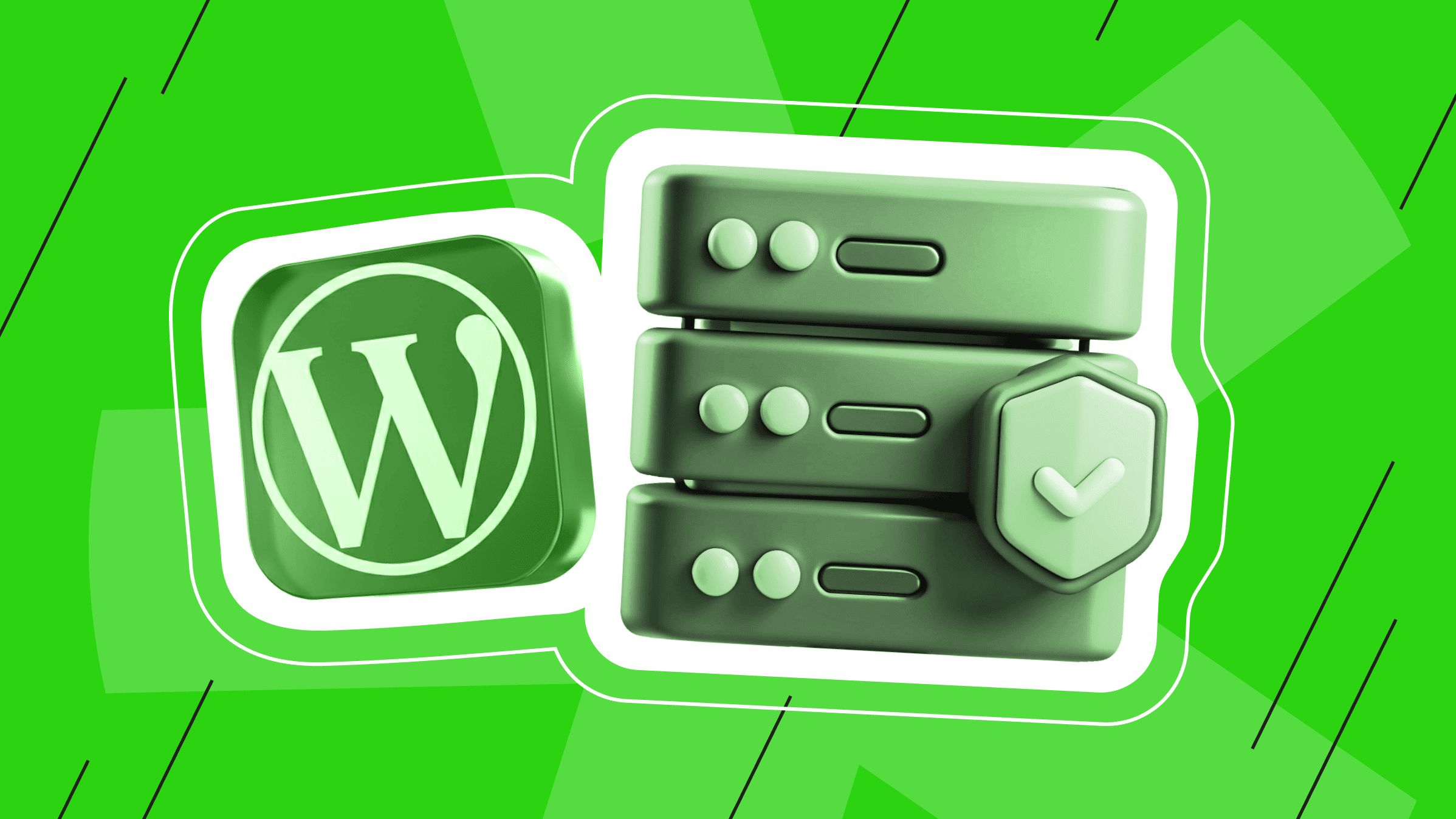
As your project grows, small slowdowns and performance spikes begin to appear. At first, scaling your VPS helps — a few more CPU cores, some extra RAM, faster storage. But over time, even these fixes stop working, and your workloads need more than shared resources can provide. That’s when the question of moving from a VPS to dedicated hosting becomes inevitable.
This guide explains how to recognize that moment. You’ll learn how to tell whether performance issues are temporary or whether your infrastructure has outgrown its virtual limits. We’ll break down seven clear signals, from CPU ceilings and memory pressure to cost inefficiency, and outline what to check before committing to the next step.
VPS vs. Dedicated Server Hosting
VPS hosting is perfect for a quick start; it’s fast to set up and costs less. A dedicated server offers more stable performance, stronger isolation, and full system control.
It’s also important to distinguish marketing lingo from reality. People who search for a "virtual dedicated server" (VDS) often discover it’s just a high-end VPS plan that still runs on shared hardware, not a true dedicated machine.
In this guide, when we refer to a "Dedicated Server," we mean a true physical machine (a single-tenant server) that belongs only to you.
Take a look at a quick comparison of VPS vs. dedicated server hosting:
|
Criterion |
VPS |
Dedicated |
|
Resource model |
Virtual slice on shared hardware |
An entire physical server just for you |
|
Performance |
Good on average; may wobble at peak |
Consistent under sustained load |
|
Isolation |
Logical separation from neighbors |
Hardware isolation; tighter blast radius |
|
Scaling |
Fast plan bumps in a panel |
Change or resize the server hardware |
|
Control |
Root/panel access |
Full hardware control |
|
Typical fit |
Early sites/apps, moderate databases, spiky traffic |
Heavy DB/analytics, high I/O, compliance needs, steady 24/7 loads |
|
Cost profile |
Lowest entry cost |
Higher entry, clearer total cost of ownership (TCO) at scale |
|
Time to start |
Minutes |
Short provisioning with upfront sizing |
How to choose: If you’re testing a product or growing in bursts, VPS maximizes speed and budget. If peak-time slowness, audit requirements, or strict tuning push you past shared hardware, bare metal becomes the safer long-term base.
During a transition, many teams run VPS and dedicated hosting side by side — front ends on VPS, stateful services on dedicated — then consolidate once traffic patterns are clear.
Clear Signs It’s Time to Upgrade from VPS to Dedicated Hosting

Every project is unique, so consider the numbers below as signposts, not strict guidelines.
1. CPU/vCPU Ceiling
If build times swing wildly or peak traffic regularly slows the app, virtual CPUs (vCPUs) may be competing for cores. Moving from a VPS to dedicated server gives you private cores and steady processing. When the same symptoms recur after short-term fixes, many teams upgrade from VPS to dedicated so the app feels consistent at peak load.
Numbers to watch:
- Average CPU usage above 70–80% for 15–20 minutes during traffic peaks. This is a strong indicator that your virtual cores are hitting their limits.
- Recurring queue or job backlogs showing that scheduled tasks, CI/CD pipelines, or analytics jobs are waiting too long to execute.
- Inconsistent build or report times where identical tasks finish in drastically different durations, such as 45 seconds one time and three minutes the next.
- Unexpected latency spikes under identical load, a clear symptom of vCPU contention caused by noisy neighbors on shared hardware.
This pattern often appears first in CI/CD-heavy SaaS teams where build and deploy jobs hit shared CPU limits under load.
Dedicated Server
Dedicated hosting. For when VPS isn’t enough.
2. Memory Pressure
Databases and caches perform best with dedicated RAM. Since SWAP is often disabled on high-performance VPS environments to maximize speed, running out of memory quickly becomes critical.
Numbers to watch:
- Sustained RAM usage above 85–90% during business hours, which means your workloads are constantly running near the limit.
- A falling cache hit ratio, showing that Redis, Memcached, or database buffers can no longer hold the working dataset in memory.
- Noticeable swap activity or frequent page faults, suggesting the system is struggling to keep up with memory requests.
- Out-of-Memory (OOM) errors in logs, a definitive sign that you’ve exceeded your VPS capacity and need dedicated hardware.
This scenario is typical for data-heavy SaaS platforms or agencies running multiple client sites on one node, where caches and database buffers start competing for the same RAM pool.
3. Storage Constraints
Shared NVMe can be extremely fast, but the activity of other users can introduce unpredictable performance spikes. If carts, uploads, or analytics pauses occur, private disks can help. Stores often upgrade VPS to dedicated storage for checkout reliability, and many teams migrate from VPS to dedicated servers when p95 write or flush times begin to climb.
Numbers to watch:
- I/O wait above 5–10% under load, meaning your processes spend too much time waiting for disk operations.
- p95 or p99 write and flush times above 20–50 ms during bursts, which points to shared I/O throttling.
- The queue depth is higher than 2 for more than a few minutes, showing that disk operations are backing up under pressure.
- Frequent “disk busy” alerts or timeouts in database logs, a clear signal that your workload has outgrown the shared storage layer.
E-commerce projects with large catalogs or frequent checkout writes tend to hit this point sooner, especially during promo peaks and analytics runs.
4. Network/Throughput Bottlenecks
When nightly backups start running into business hours or page fetches slow down without any code changes, the shared network might be the reason. Upgrading from a VPS to a dedicated server makes it easier to control throughput, and choosing a managed VPS-to-dedicated hosting setup means you always have expert help nearby.
Numbers to watch:
- Backup jobs regularly exceed their time window, indicating that data transfers are being throttled or delayed.
- Average link utilization above 70% for extended periods, a common sign of network saturation.
- Retransmits or packet loss visible in logs, including TCP retransmissions or dropped packets, showing that shared network jitter is present.
- Variable latency between internal services, where microservices or database calls fluctuate despite steady traffic.
This issue often appears in online stores with nightly backups or large file transfers, where shared bandwidth collides with business-hour traffic.
5. Resource Contention and Tail-Latency Variance
Does the average look fine while p95 or p99 hurts real users? Multi-tenant variance is hard to tame. Moving to private hardware removes the largest unknown. Many projects upgrade from VPS to dedicated primarily to squash tail latency.
Numbers to watch:
- p99 latency is two times or more higher than p50 latency, showing worst-case response times are far beyond the median.
- User reports of random slow sessions that don’t correlate with releases or known issues.
- Unpredictably delayed background jobs, suggesting hidden contention on shared CPU, I/O, or memory bandwidth.
- API calls showing inconsistent response times, even under identical load conditions — another sign of performance interference from other users on shared hardware.
This is especially visible in SaaS stacks with chatty microservices or real-time dashboards, where p95 latency spikes degrade user experience fast.
Bare Metal
Pure hardware performance at your command. No virtualization, no overhead — just a physical server for high-load applications, custom configs, and absolute control.
6. Security/Compliance/Isolation
Some audits or vendor contracts require single-tenant isolation, Intelligent Platform Management Interface (IPMI) access, or specific modules. In these cases, moving from a VPS to a dedicated server is the straightforward answer. If your team prefers managed help, look for a VPS-to-dedicated hosting plan.
What to watch for:
- Audit requirements referencing single-tenant environments, such as PCI DSS, SOC 2, or HIPAA.
- Vendor requests for hardware-level isolation or firmware control, including IPMI access or encrypted storage.
- Legal or compliance clauses that prohibit shared infrastructure, often seen in enterprise contracts.
- Security assessments flagging virtualization as a risk, indicating a need for physical isolation.
This scenario is especially relevant for example, for agencies handling client data under NDA or SaaS platforms subject to PCI DSS/SOC 2 audits.
7. Total Cost Inflection
At scale, a “very large VPS” with add-ons can cost more than dedicated server while still feeling unpredictable. If invoices rise and performance jitters remain, many owners plan a move from VPS to a dedicated server for saner TCO. Others move from VPS to dedicated after a quarter of emergency upgrades.
Numbers to watch:
- Total monthly cost for VPS plus storage and bandwidth add-ons exceeding a dedicated setup by 20–30% or more for at least three months.
- Frequent emergency scaling or last-minute upgrades, which inflate costs and signal capacity instability.
- Performance still inconsistent despite higher spend, indicating that virtualization overheads can’t be optimized further.
- Constant high resource utilization, suggesting that a dedicated environment would deliver better return on investment and lower TCO.
Agencies managing multiple production sites and SaaS teams running staging plus CI environments often cross this cost threshold first.
When You Can Just Scale VPS Resources

In many cases, you can extend your current setup by scaling your VPS — adding CPU cores, RAM, or faster NVMe storage right from your panel. If the issue disappears, your infrastructure still matches your workload, and there’s no need for an immediate VPS-to-dedicated hosting migration.
Scaling works well for temporary or isolated performance issues. For example, CPU bottlenecks during short traffic spikes, occasional RAM pressure during import jobs, or I/O slowdowns during analytics bursts can often be resolved by adding more resources within your VPS tier.
|
Situation |
What to Try First |
When It’s a Sign to Move On |
|
CPU load temporarily spikes during marketing campaigns |
Add 1–2 vCPUs and monitor 24-hour averages |
If 80%+ usage persists after the upgrade |
|
Memory pressure appears only during backups or imports |
Increase RAM by 25–50% |
If cache misses or OOM errors return quickly |
|
Storage latency increases during I/O bursts |
Upgrade to NVMe or a higher IOPS tier |
If p95 latency remains high under steady load |
|
Backup windows overlap work hours |
Move backups off-peak or upgrade network bandwidth |
If throughput is still inconsistent |
|
Users report slowdowns at random times |
Enable monitoring to find noisy neighbors |
If variance persists, it’s time to go VPS to dedicated hosting |
Scaling gives you quick results and the data you need to judge whether you’ve hit virtualization limits. It’s a useful middle ground before committing to moving from a VPS to dedicated hosting — a chance to test capacity and understand real resource needs.
However, scaling isn’t a long-term fix. If metrics rise again within weeks, costs approach those of dedicated servers, or performance still varies even after upgrades, it’s a clear signal that you’ve outgrown shared infrastructure. That’s when a VPS-to-dedicated hosting transition becomes the logical next step, delivering consistent performance, full isolation, and predictable total cost.
Conclusion
As your application matures, shared resources eventually stop keeping up with your traffic, database, or compliance needs. Moving from VPS to dedicated hosting gives you the stability of isolated hardware, predictable performance at peak times, and the freedom to fine-tune every system layer.
Before making the switch, remember that even a dedicated setup won’t solve everything. If the slowdown comes from app or database design, no amount of hardware will fix it.
Check these essentials first:
- Your CPU or RAM stays near 80–90% even after scaling.
- Performance varies unpredictably, especially at p95 or p99 latency.
- Storage or network throughput becomes inconsistent under steady load.
- Total monthly costs for a large VPS approach a comparable cost to a dedicated setup.
- Security or audit policies demand full hardware isolation.
Keep in mind that even dedicated hardware won’t fix architectural or code-level bottlenecks. If the slowdown stems from database design, locking, or inefficient service-to-service calls, adding more cores and RAM will only mask the issue. Address these first, then scale.
If most of these signs sound familiar, it’s time to plan your VPS-to-dedicated hosting transition. With is*hosting, migration is seamless — from setup to data transfer — so your project can scale without interruption and start operating on a truly stable foundation.
Managed Dedicated Server
Full power, zero hassle. We handle setup, updates, monitoring, and support so that you can focus on your project.
From $66.67/mo

